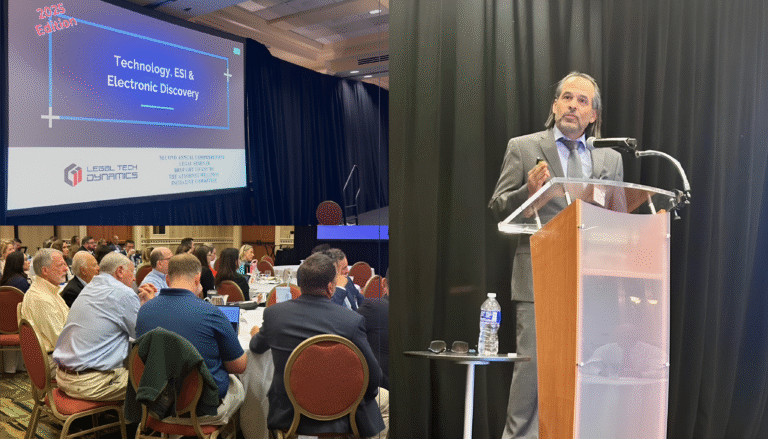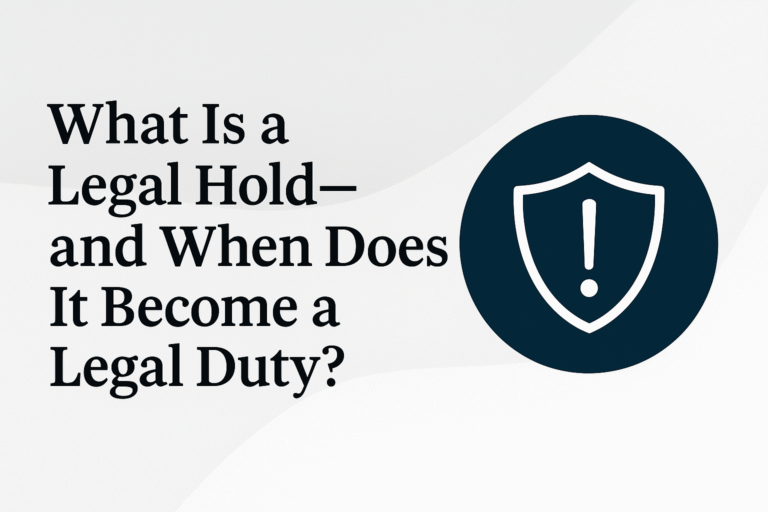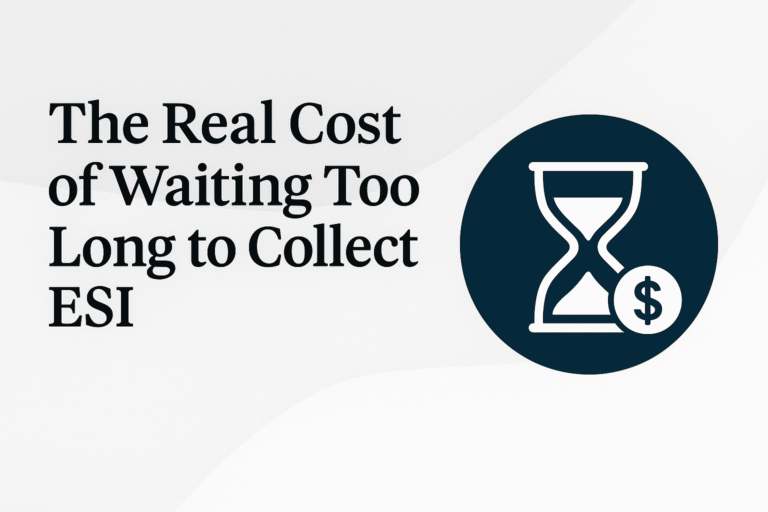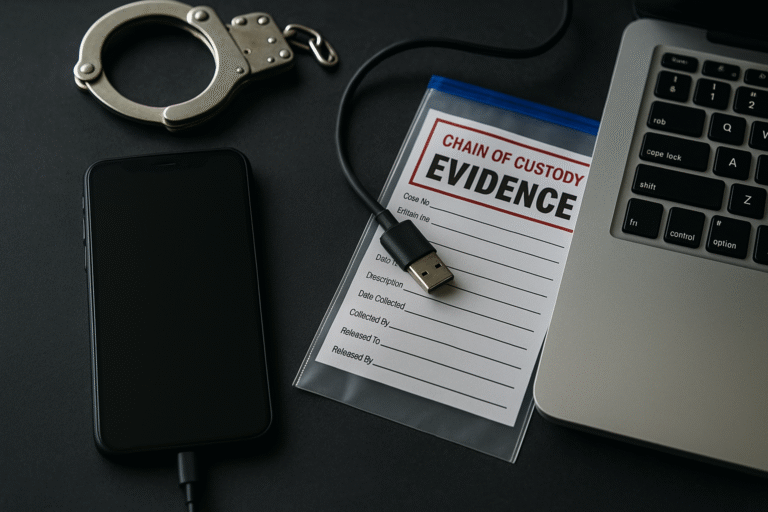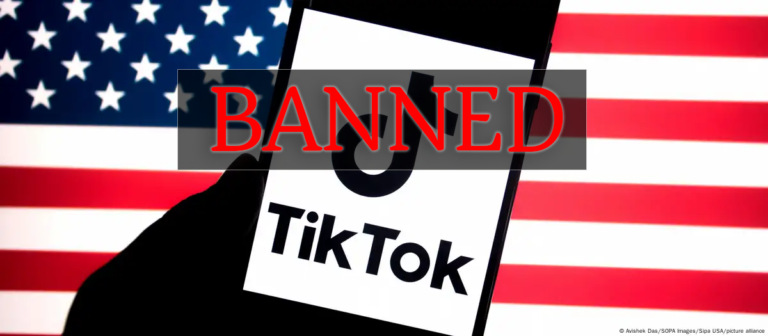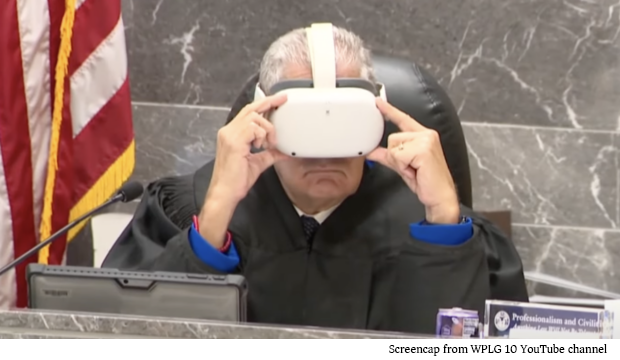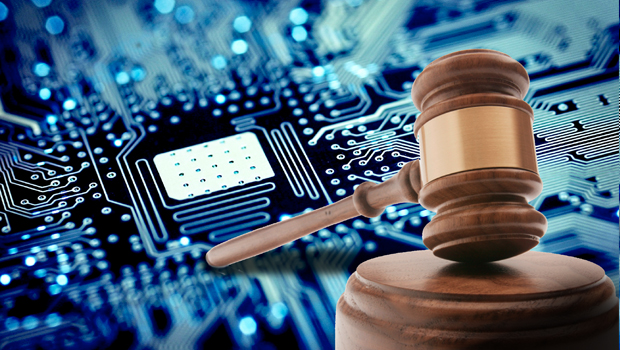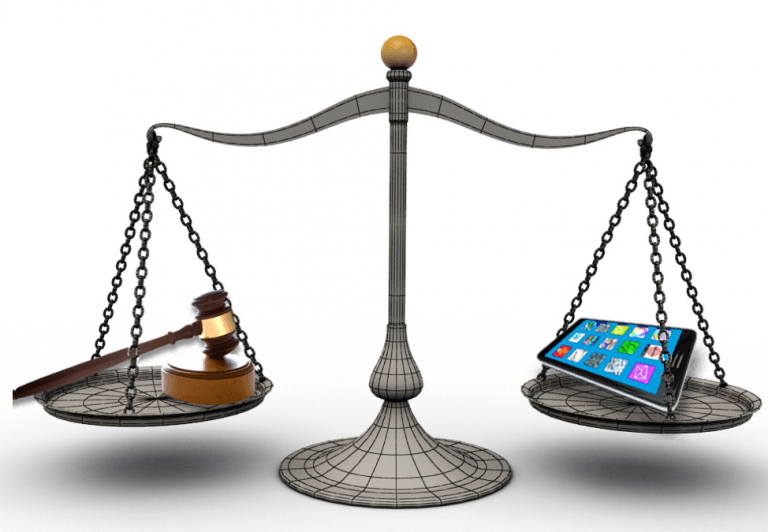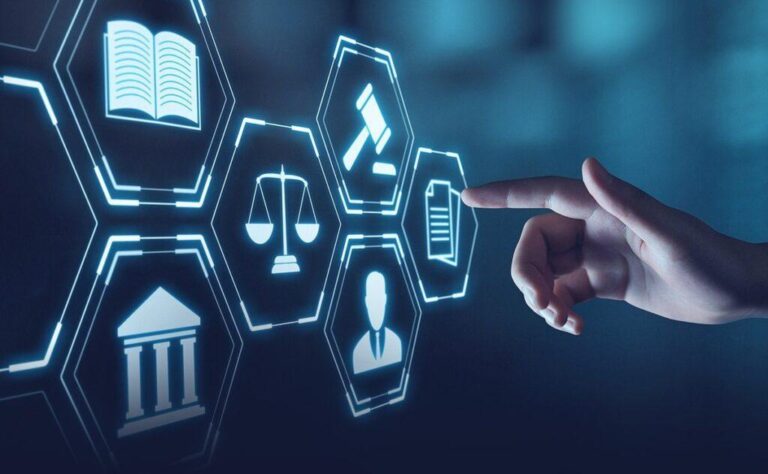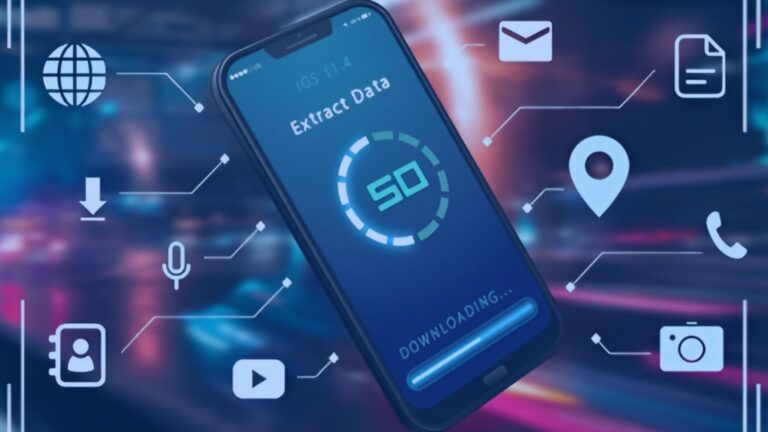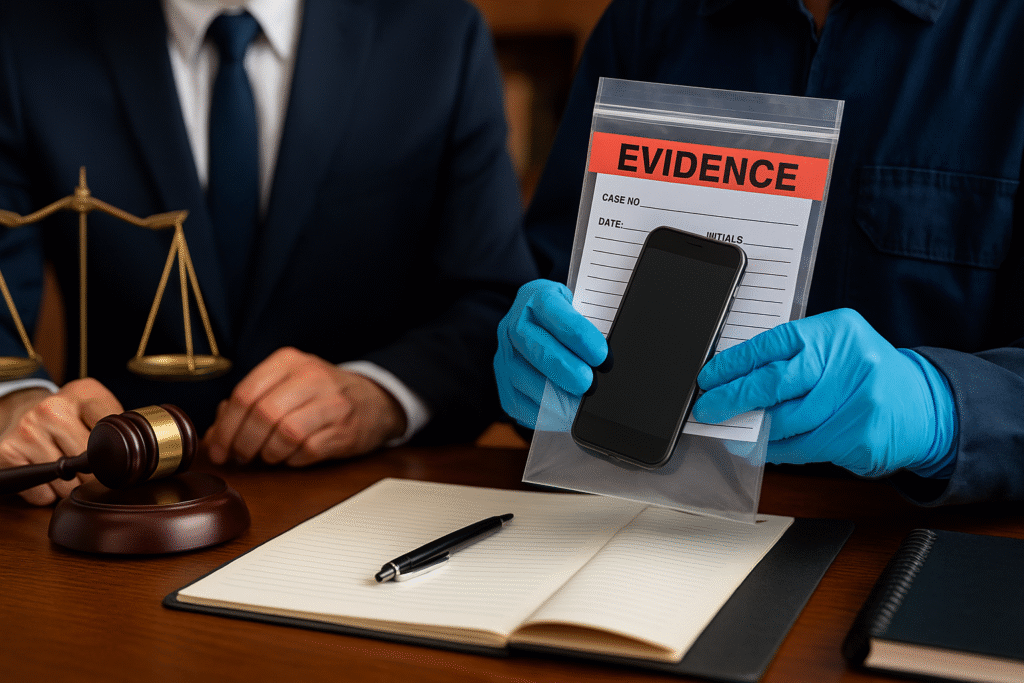Why acting quickly and strategically can make or break your case.
In today’s digital age, the smartphone is more than just a communication tool—it’s a portable archive of conversations, photographs, documents, GPS data, social media activity, and app usage. For attorneys, this means mobile devices often play a central role in litigation.
Whether you’re handling a family law matter, a business dispute, or a criminal defense case, there may come a time when your client’s phone becomes evidence. The question is: what should you do the moment that becomes clear?
Most attorneys know that electronic data is sensitive. But many don’t realize just how easy it is to lose, overwrite, or mishandle mobile evidence—often unintentionally. Here’s what you need to know to preserve your client’s phone properly and ensure the evidence remains admissible and defensible in court.
Step 1: Secure the Phone—Immediately
The first and most important rule is simple: do not let your client use the phone any further. Even routine actions like unlocking the device, reading a message, or installing an update can alter metadata and destroy key forensic markers.
The safest course of action is to physically secure the device and instruct your client not to power it on or make any changes. If possible, issue a formal legal hold notice that includes language specifically referring to mobile devices and electronic communications.
Attorneys often underestimate how easily data can be modified—even just by having the phone turned on and connected to Wi-Fi. Once the data is altered, it may be difficult or impossible to prove the authenticity of the evidence later.
Step 2: Avoid DIY Methods—Use a Forensic Expert
Many lawyers and clients instinctively try to take screenshots, forward text messages to email, or back up the phone to iCloud or Google Drive. Unfortunately, these efforts can backfire.
While screenshots may be helpful for reference, they are not a substitute for properly preserved forensic evidence. Screenshots can be manipulated. Backups are often incomplete. And copying information manually risks altering or omitting important metadata.
Instead, engage a qualified digital forensics expert who can perform a forensic image of the device. This is a bit-for-bit copy of the entire phone, which includes both visible and hidden data. A proper forensic collection will also preserve the chain of custody—another critical component if the evidence will be presented in court.
Step 3: Define What You Need and Why
Not every case requires a full forensic analysis of a device, but many do. You’ll want to consider the type of data that may be relevant: texts, call logs, photos, videos, app data, GPS locations, and even timestamps. In many cases, what the user didn’t do—such as a missing message or deleted app—can be just as important as what they did.
At this stage, having a clear objective is essential. Are you investigating a timeline? Verifying location history? Identifying deleted messages? Your forensics partner can tailor the scope of collection and analysis to fit your legal needs while minimizing unnecessary exposure to privileged or irrelevant data.
Step 4: Get Ahead of Discovery Disputes
Many attorneys wait until opposing counsel raises discovery questions before dealing with digital evidence. That’s a mistake.
The earlier you take control of the device and begin working with a digital forensics professional, the better positioned you’ll be to:
- Decide what data needs to be produced
- Defend your process in meet-and-confer discussions
- Push back on overbroad or unreasonable discovery demands
Courts are increasingly scrutinizing how attorneys manage electronically stored information (ESI). Being proactive isn’t just good practice—it’s a protective measure for your client and your professional reputation.
Final Thoughts
Phones are goldmines of potential evidence—but they’re also landmines if not handled properly. The steps you take (or fail to take) when digital evidence surfaces can significantly affect the outcome of a case.
Whether you’re concerned about spoliation, authentication, or discovery strategy, working with a qualified digital forensics consultant from the start can help you avoid costly mistakes and focus on what matters most: your legal strategy.
📞 Need Help Preserving or Imaging a Device?
At Legal Tech Dynamics, we specialize in helping attorneys preserve, analyze, and manage mobile device evidence through case-specific consulting and forensic services. Whether you’re facing a court deadline, anticipating a motion to compel, or just trying to do things right from the start—we’ve got your back.
👉 Schedule a consultation today and let’s make sure your digital evidence is preserved the right way.


